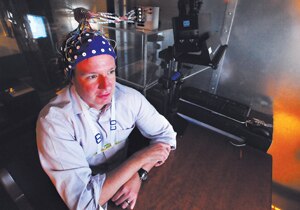Computers with human interfaces are usually made for people with disabilities to help them communicate with others. But what about an interface that helps the typical user find information more quickly and efficiently? For example; using Google to find a certain picture of a paper airplane. You get about a million or so hits but sifting through them all would take a life time to find that one specific picture. Or better yet try using Google to find a certain picture by typing in ‘embedded circuit design’ and see what it gets you. Professor Paul Sajda from Columbia University in New York and his research team are building a computer that uses an EEG machine to help sift through massive amounts of data to find exactly what you’re looking for. They call it a cortically coupled computer vision system (C3Vision) and it helps by using the human brains power of object recognition. Professor Sajda says that, “Humans have great general object recognition, and computers are very good at chugging through lots of data, we are marrying the two in a way that leverages what each one is good at.” C3Vision uses an EEG cap that monitors brain activity while the user is being shown certain pictures of what they are interested in. A special learning algorithm monitors the brains activity during the process and then refines its search based on the brains heightened response of certain images. Of course this research has caught the attention of intelligence agencies, which is consequently being funded by DARPA, to help analysts go through mountains of data to find objects of interest. For more information on C3Vision please visit Columbia University’s news page at: http://news.columbia.edu/record/2188
Eavesdropper

